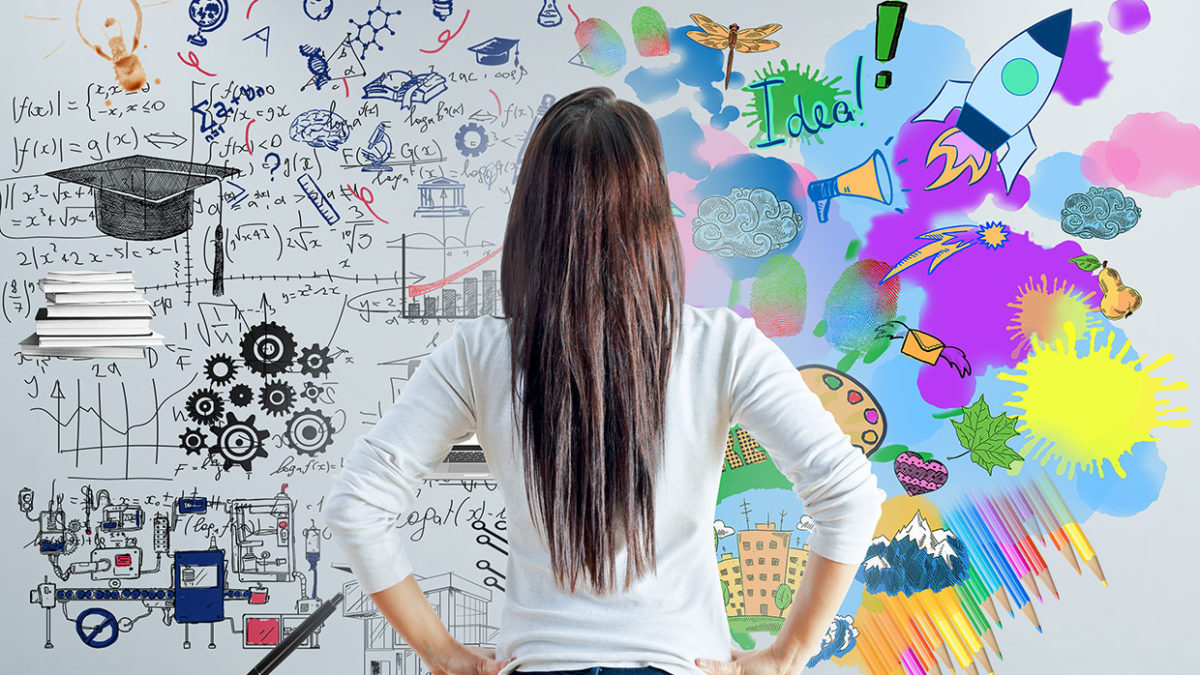STEAM education is helping the next generation of tech workers explore their artistic side
People with the ability to combine their engineering and scientific skills with their understanding of art, literature, music, and other creative works have introduced popular products and spawned billion-dollar industries. They’ve also made our lives a bit more enjoyable.
Take, for example, IEEE Member Alvy Ray Smith, the digital graphics pioneer who helped found Pixar. The company produced the first computer-animated feature film, Toy Story, and has since been winning over audiences of all ages with such blockbusters as Monsters Inc., The Incredibles, and Cars. Pixar received the 2018 IEEE Corporate Innovation Award.
The H910 Harmonizer, invented by IEEE Life Member Anthony Agnello, is a digital audio effects processor that gives musicians and producers flexibility by letting them, for example, change the pitch of an instrument, delay a sound, or have it repeat. Agnello’s work was recognized with a Technical Grammy Award this year.
Life Fellow Amar G. Bose founded Bose Corp., the audio equipment company. The visionary sound engineer, who died in 2013, invented the 901 Direct/Reflecting speaker system, one of the first stereo loudspeakers to use the space around a room instead of aiming all the sound directly at the listener. The 901 remained an industry standard for 25 years.
Those are “examples of technology and art blending together to create experiences that neither could do on its own,” says IEEE Fellow S.K. Ramesh. He’s director of the AIMS2 program at California State University, Northridge. The program is working to improve the academic achievement of Hispanic and low-income students in engineering and computer science and helping them pursue a career in a STEM field. “This coming together makes the whole much greater than the sum of its parts.
“There is this holistic approach of looking at the arts as a vehicle to inspire and motivate workers to create something new and different,” says Ramesh, a former IEEE Educational Activities vice president.
Training more people how to use both the analytical and the artistic sides of their brain is behind the STEAM movement, which encourages education that combines art with science, technology, engineering, and math.
STEAM can give greater context to an engineer’s work. The key to good design is a combination of empathy and knowledge of the arts and humanities, according to Vivek Wadhwa, an adjunct professor at Carnegie Mellon University Silicon Valley.
As Steve Jobs said when he unveiled the iPad2, “It’s in Apple’s DNA that technology alone is not enough; it’s technology married with liberal arts, married with the humanities, that yields us the result that makes our heart sing.”
Ramesh says having a STEAM background also increases diversity of thought and inclusiveness in the workplace—beyond the traditional categories of diversity, like gender, sexual orientation, socioeconomic status, and race.
“Those who have an artistic, musical, or another creative background see things from a different perspective,” he says. “Other employees begin to appreciate them—which leads coworkers to value each other more. STEAM brings together people and communities—which can be transformative.”
EARLY START
Studies show that STEAM education improves creativity and innovation. When students encounter a problem or challenge, they are encouraged to work through the solution not only using science and technology but also leveraging their knowledge of the arts, according to an eSchool News article. They use creativity along with technical skills as well as out-of-the-box thinking and persistence—all traits companies are looking for in new hires, according to a Fast Company article.
Because STEAM hands-on projects incorporate a variety of materials and tools, students learn by practice, rather than from a lecture. They also learn at their own pace, using solutions they’ve devised. This method establishes an equal playing field for all students, regardless of their gender, socioeconomic status, or race, according to the eSchool News article.
IEEE PROGRAMS
IEEE is doing its part to help educators train the next generation of STEAM workers. Its TryEngineering program offers free lesson plans to educators working with preuniversity students. They include Animation With Object Efficiency, Engineered Music, and Laser Creations: Designing and Producing a Custom ID Tag.
This year IEEE introduced the TryEngineering Summer Institute, a two-week program that gives students ages 12 to 17 hands-on projects in a variety of engineering fields while learning what it’s like to live on a college campus. Projects include designing a rocket, a 3D-printed car, and a trebuchet. Registration is now open for next year’s program.
Ramesh, who visited one of the camps held at the University of California, Riverside, shared how one student made a small, origami-type table out of napkins and toothpicks.
“He asked me, ‘Do you think this would be part of engineering?’” Ramesh says. “I was simply blown away because this creative young man looked at the materials in front of him and realized they could be turned into something functional. It was inspiring.
“It may sound cliché,” Ramesh adds, “but I truly believe engineering is the renaissance discipline of our century. With STEAM, we have the ability to educate in such a way that we can bring out more creativity and curiosity in students as well as build a more diverse and inclusive society of workers. Anything that we can do to make engineering more meaningful is the direction we need to go in.”

